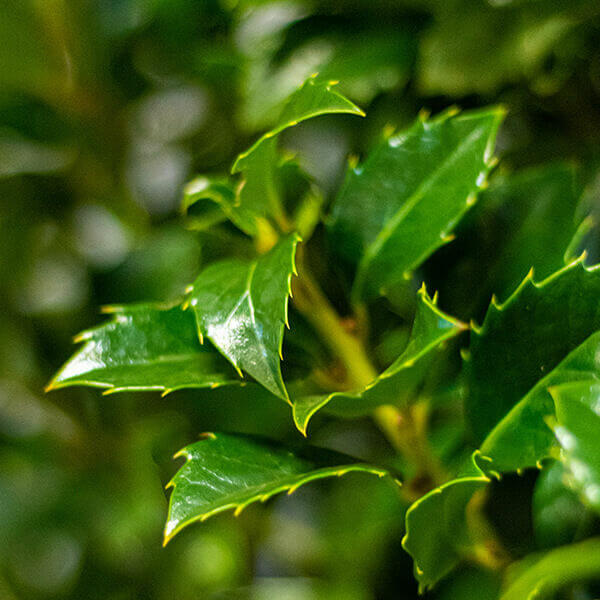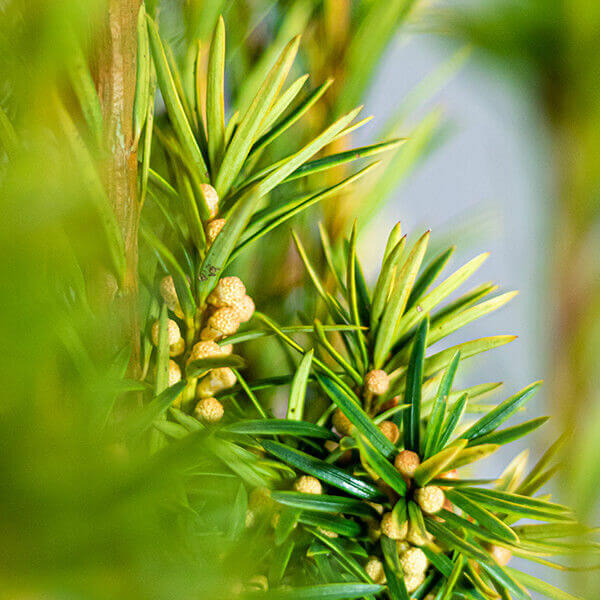Best Hedging Plants For Driveways
Best Hedging Plants For Driveways
Blog Article
Best Hedging Plants For Balcony Gardens
Improve your garden's allure with lavish hedge varieties such as Yew (Taxus), Thuja, Laurel, Photinia, and Bamboo, celebrated for their structural stability and environmental benefits.
Yew and Thuja supply evergreen coverage and winter strength, while Laurel uses rapid development and broad, aromatic leaves.
Photinia includes seasonal charm with its dynamic red foliage, and Bamboo lends a low-maintenance, tranquil atmosphere.
These hedges enhance air quality, decrease noise, and produce tranquil, personal areas.
Correct planting, spacing, and maintenance ensure vigorous growth and environmental harmony.
Check out how these lavish ranges can raise your garden's appeal and wellness.
Secret Takeaways
Change Your Garden With Lush Hedge Ranges
- Select Yew for its thick, evergreen growth and unequaled durability.
- Opt for Laurel for its fast growth and broad leaves, guaranteeing quick privacy.
- Choose Photinia for its vibrant seasonal foliage, which turns a striking dark red.
- Utilize Bamboo for a low-maintenance, winter-hardy hedge with visual appeal.
- Area plants 2-3 per meter and prune frequently for ideal growth and health.
Popular Hedge Plants
When transforming a garden with lavish hedge ranges, it's important to consider popular hedge plants such as Yew, Thuja, Laurel, and Photinia due to their unique characteristics and advantages.
Yew (Taxus) is extremely esteemed for its longevity and thick, green growth, making it a prime choice for sustaining landscapes.
Thuja is kept in mind for its evergreen foliage and robust winter resilience.
Photinia includes seasonal vibrancy with red leaves that darken with time, producing dynamic visual appeal.
Laurel uses fast growth and aromatic, broad leaves, suitable for quick personal privacy.
Furthermore, Bamboo is an exceptional choice for atmosphere, providing a low-maintenance, winter-hardy option that boosts the garden's aesthetic with its elegant, swaying walking sticks.
These choices cater to a range of horticultural needs and choices.
Benefits of Garden Hedges
Garden hedges use a wide variety of benefits, making them an important addition to any landscape. These natural barriers are affordable to carry out and provide substantial wind protection, improving air circulation and adding to noise decrease. The dense foliage of hedges like Thuja and Beech makes sure privacy by obstructing presence, producing a peaceful and remote environment.
Hedges also play a crucial role in microclimate policy, supplying a stable environment that promotes plant development and decreases temperature changes. Their detailed leaf structures filter pollutants, improving air quality and contributing to a much healthier garden environment.
Additionally, hedges master noise decrease, soaking up and deflecting acoustic waves to lower ambient noise levels. This dual functionality of providing both acoustic and visual personal privacy boosts the total tranquility and aesthetic appeal of any garden.
Planting and Maintenance Tips
For a successful hedge, meticulous preparation of the planting area is crucial. Ensure the soil has proper pH and drainage to support strong root development.
Area the plants properly for the picked types. Water the hedge regularly during its preliminary growth phase, changing as needed with seasonal modifications.
Execute a systematic insect control and disease prevention method, using organic or chemical treatments when required. Frequently inspect for aphids, mites, and fungal infections.
Apply mulch to retain wetness and suppress weeds. Seasonal pruning promotes dense development and air blood circulation, important for plant health.
Following these standards will help you cultivate a dynamic, well-maintained hedge that enhances the appeal of your garden.
Spacing and Cutting Guidelines
Spacing and Cutting Guidelines
Correct spacing and trimming are vital for cultivating healthy, visually appealing hedges. Adequate spacing ensures each plant receives enough nutrients, light, and airflow.
Follow these guidelines for optimal hedge upkeep:
- Spacing: Position hedge plants 2-3 plants per meter to encourage robust growth.
- Pruning Methods: Regular pruning is important for preserving preferred hedge height and shape. Trim new growth in summer season and cut down older wood throughout winter season.
- Seasonal Care: Adjust trimming methods and schedules according to seasonal requirements to make sure plant health.
- Hedge Height: Frequently screen and trim to maintain the desired hedge height and attain consistent aesthetic appeals.
Complying with these actions will ensure your hedge thrives, boosting both the appeal and performance of your garden.
Selecting the Right Hedge
Choosing the Right Hedge
Picking the suitable hedge involves examining elements such as mature height, foliage density, and ecological durability. Effective hedge plant choice requires comprehending each species' development qualities and site-specific adaptability.
For instance, Yew (Taxus) offers exceptional durability and dense development, while Thuja is noteworthy for its winter season durability. In addition, considering upkeep requirements is important; fast-growing types like Laurel or Privet demand routine trimming, whereas low-maintenance alternatives like Bamboo or Ivy might be more effective for those seeking very little upkeep.
Ecological aspects such as soil type, light accessibility, and wetness conditions ought to likewise guide the selection procedure. This careful method makes sure the chosen hedges will prosper, providing both aesthetic and practical benefits to the garden landscape.
Shipment and Planting Recommendations
To ensure your hedge plants flourish, they ought to be provided by specialized couriers and planted immediately upon arrival.
Follow these essential steps for effective planting:
- Soil Preparation: Improve the soil with organic matter to improve drain and nutrient material.
- Planting Depth: Create a trench twice the width and equivalent to the depth of the root ball.
- Watering Strategies: Water completely after planting, keeping the soil consistently moist but not filled.
- Mulching: Use a layer of mulch to maintain wetness and suppress weeds.
Customer Support and Service
Provided the important function of prompt help in horticultural pursuits, our customer support team is available six days a week through telephone, email, and social media to provide professional recommendations and promptly resolve any issues. Their devotion to fast action times ensures consumer fulfillment by resolving queries related to plant health, optimal planting methods, and maintenance schedules.

-----------------
Telephone
Within two days
This comprehensive support system, reinforced by an outstanding 9.3/ 10 client ranking, highlights our dedication to boosting the gardening experience for every client.
Frequently Asked Questions
How Long Does It Take for Hedge Plants to Establish?
Hedge plants generally require one to three years to become fully established, with the specific period differing by types and growing conditions.
Reliable care throughout Additional resources this vital period is important for robust growth. Consistent watering, vigilant weed control, and appropriate fertilizer application are critical in promoting strong root development.
For example, fast-growing species like Laurel may develop more rapidly, while slower-growing ranges such as Yew may take longer. Persistent maintenance speeds up the facility process, resulting in thick and healthy hedges.
What Are the very best Hedge Plants for Privacy?
The question of the very best hedge plants for personal privacy involves evaluating evergreen and deciduous alternatives.
Evergreen hedges like Thuja, Laurel, and Cypress supply year-round coverage, ensuring constant personal privacy.
In contrast, deciduous hedges such as Beech use seasonal personal privacy, shedding leaves in colder months.
Secret upkeep suggestions for personal privacy hedges consist of regular cutting, fertilizing in spring, and appropriate spacing-- typically 2 to 3 plants per meter.
In addition, consistent watering and diligent weed elimination are essential for promoting healthy, thick growth.
Can Hedge Plants Attract Wildlife to My Garden?
Yes, hedge plants can draw in wildlife to your garden by providing necessary benefits like shelter, food, and nesting websites, thus boosting local biodiversity. Yew, holly, and laurel are outstanding for attracting birds, while ivy supports a variety of pests.
However, it is very important to note that there are some downsides, such as increased maintenance to manage bugs and regular maintenance. Thoroughly selecting and preserving hedge ranges can help stabilize these benefits and disadvantages, ultimately cultivating a sustainable and dynamic environment in your garden.
Exist Any Flowering Hedge Plants Available?
Yes, there are flowering hedge plants offered that can boost the beauty of your garden.
For example, Elaeagnus, likewise called Olive Willow, produces fragrant white flowers in the fall, adding a touch of elegance.
Photinia, another popular choice, showcases lively red leaves that mature into a rich green, producing a vibrant visual result throughout the seasons.
To ensure these plants flourish, it's necessary to practice correct pruning techniques and seasonal maintenance, such as trimming new growth in the summertime and cutting down in the winter season.
These procedures will assist maintain the health and aesthetic appeal of your flowering hedges.
How Do I Prevent Pests in My Hedge Plants?
To prevent insects in hedge plants, utilize natural insect control techniques and preserve appropriate hedge care. Introduce useful bugs like ladybugs, which take advantage of hazardous insects, to produce a balanced community.
Routinely examine your hedges for signs of infestation and quickly eliminate any affected parts to prevent the spread. Ensure the health of your hedges by using well balanced fertilizers and offering sufficient water.
Use mulching to retain soil moisture and appropriate spacing to decrease plant stress and promote robust growth. These practices collectively help in decreasing bug concerns and preserving a healthy hedge.
Conclusion
In essence, choosing the ideal hedge ranges such as Yew, Thuja, and Laurel can transform any garden into a peaceful haven. These plants supply year-round greenery, enhance visual appeal, and deal practical advantages like sound reduction and wind protection.
Correct planting methods, accurate spacing, constant watering, and seasonal trimming are essential for ideal growth.
Dependable shipment services and professional customer assistance guarantee a smooth experience from purchase to planting, making it easier than ever to elevate your outside space.
Garden hedges use a wide range of advantages, making them a valuable addition to any landscape. These natural barriers are cost-effective to execute and provide considerable wind protection, improving air circulation and contributing to sound decrease. The dense foliage of hedges like Thuja and Beech makes sure privacy by blocking visibility, producing a tranquil and secluded environment.

Pruning Strategies: Routine pruning is important for maintaining wanted hedge height and shape. Trim new development in summertime and cut back older wood throughout winter season.
Report this page